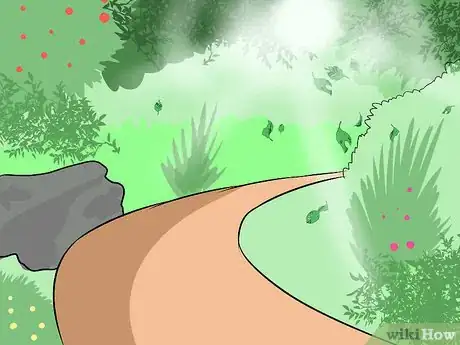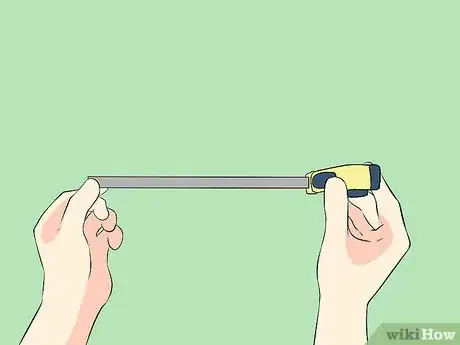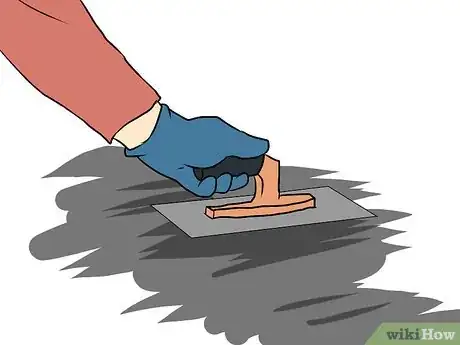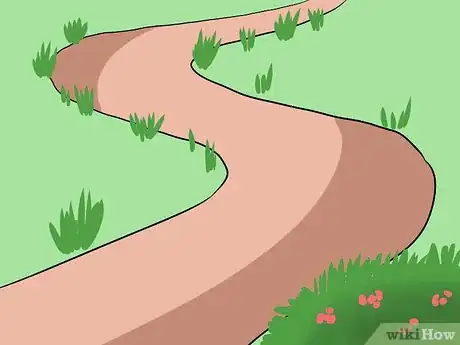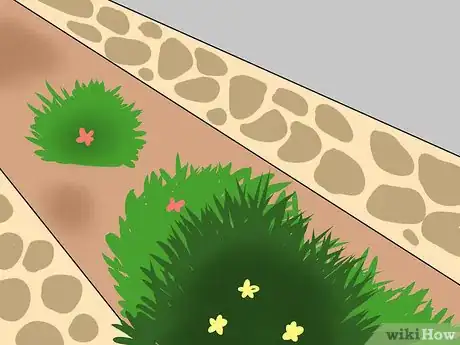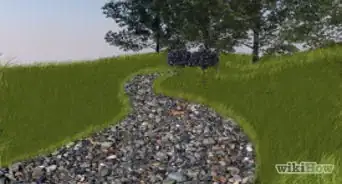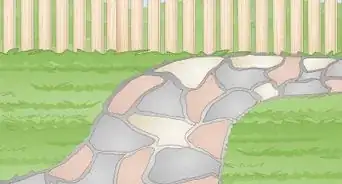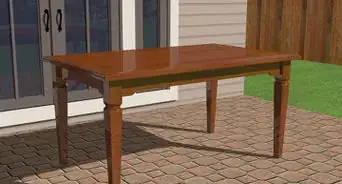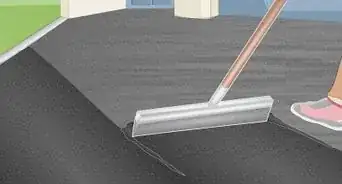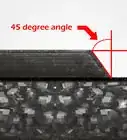X
wikiHow is a “wiki,” similar to Wikipedia, which means that many of our articles are co-written by multiple authors. To create this article, 10 people, some anonymous, worked to edit and improve it over time.
This article has been viewed 63,743 times.
Learn more...
Both practical and attractive, walking paths can add charm and visual interest to your outdoor spaces. They provide a way to safely access the parts of your garden you want guests to visit and can add value to your property. Knowing how to create a walking path will help you create different zones in your garden and direct the traffic flow.
Steps
-
1Establish the purpose of your garden path or paths.
- Guide visitors through your property by using walking paths. They will more likely go where you want them to go and avoid areas you'd rather they not be.
- Have walking paths that allow you easy access to garden sheds and other utility areas.
- Walking paths can lead to an outstanding feature or view. You can position a gazebo,an arbor or fountain at the end of a pathway. Try not to have paths that lead to nowhere.
- Walking paths add beauty and visual interest to your garden. They tie your garden design elements together.
-
2Plan where your walking paths will go and decide the shape and direction they will take.
- Use a measuring tape to calculate how much material you will have to purchase to pave your pathway.
- Gently curving paths are visually appealing and interesting for the walker to navigate. Straight walking paths are good for very formal gardens. You might also keep the main access path wide and straight while allowing for smaller, curving adjoining pathways.
- Use garden hose or some other material to lay out the shape of your pathway before you begin to dig or pave.
Advertisement -
3Consider the width of your walking path.
- Allow 2 to 3 feet (0.91 m) (60 to 90 cm) in width for the average walker. For two people to walk side by side, the pathway width should be 4 to 5 feet (1.2 to 1.5 m) (1.2 to 1.5 m) wide.
- Be sure the path is wide enough for a wheelchair or stroller if necessary.
- Make certain your garden path can accommodate wheelbarrows, lawnmowers and other garden equipment.
-
4Choose the kinds of material you want to use to pave your walking path.
- Your walkways can be simple grassy lanes, made of elaborate stone or a combination of many materials.
- Landscape pavers come in all shapes, sizes, colors and prices. Visit your local garden or building supply store to explore your choices.
- There are many choices for natural stone as well although this material can be expensive. Flagstone is a good choice.
- Think about using mulch or pea gravel for your garden walk. These materials are less expensive but also less durable and will need to be reapplied from time to time. Perhaps use these for less used paths and a more substantial product for your main walkway.
- Concrete is a very permanent material to consider although it often looks less attractive than other choices. Stamped concrete might be an alternative. Be sure when using this material that you won't want to change the location or direction of the path in the future.
- Bricks and cobblestones can be used for your path. Or consider a combination of materials such as brick and concrete together.
- Make sure the material you use for your walk will be safe. Ensure that the pathway doesn't become slippery after a rain, for example.
-
5Soften your path with attractive border plants and features such as statuary, large stones or bird feeders. The walking path can be a divider between various gardens.
-
6Plant short grasses, herbs, or ground cover in between stepping stones to add charm and soften the effect.
-
7Provide adequate lighting for walkers using the path at night. You can hard-wire your lights or use inexpensive solar lighting. Spotlights can be positioned in trees to add interest and beauty or placed where there are steps for safety. For occasional lighting to use for an evening party, for instance, use luminaries or string small lights along the pathway.
-
8Clear the area where your path will go of plants and debris and consult with your local building supply center as to how to lay stone or concrete. You might think about using a weed barrier fabric before laying paving material.
Advertisement
Community Q&A
-
QuestionCost of paved walk path?
 Community AnswerAbout $200 per pavement square (up to 4-foot by 4-foot). This cost takes care of normal or typical soil dig-out, forming, graveling, concreting and its finishing and sealing. A quite good deal, but you can do it yourself for half the cost, if you have the tools, brawn and basic know-how.
Community AnswerAbout $200 per pavement square (up to 4-foot by 4-foot). This cost takes care of normal or typical soil dig-out, forming, graveling, concreting and its finishing and sealing. A quite good deal, but you can do it yourself for half the cost, if you have the tools, brawn and basic know-how. -
QuestionHow do I draw a map of my walking path?
 Community AnswerTake an HD picture of the path or the area where you want the path. Then, open that picture with an image editing software (Paint, Gimp, etc.) and generate some visuals.
Community AnswerTake an HD picture of the path or the area where you want the path. Then, open that picture with an image editing software (Paint, Gimp, etc.) and generate some visuals.
Advertisement
About This Article
Advertisement
